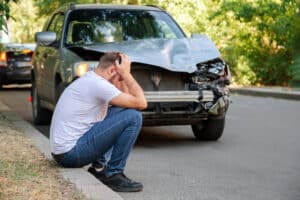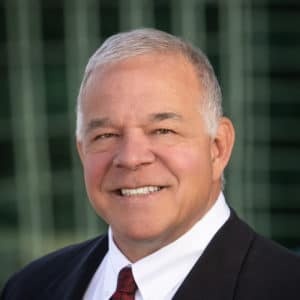Determining who hit who in a car accident often plays a critical role in establishing liability. The intricate dance of traffic, vehicles, and human error can create a complex landscape that proves challenging to untangle without a detailed investigation.
This confusion can increase in multi-vehicle accidents, where the order of events may prove unclear. Your car accident lawyer, working in tandem with accident reconstruction experts and investigators, can help establish the series of events leading to the crash. Understanding these collision dynamics is a significant part of building a strong personal injury case.
The Complexity of Car Accidents
Car accidents, while unfortunately commonplace, involve a multitude of factors that can make them complex to navigate from a legal perspective.
Regardless of how straightforward an accident may seem, various underlying elements often need thorough consideration and examination. These can include everything from the timing of traffic lights, the speed of the vehicles, and the environmental conditions at the time of the accident to countless other details, each potentially playing a crucial role in determining liability.
How Car Accidents Can Create Complex Situations

A specific set of circumstances shape each car accident. Elements such as the number of vehicles involved, the conditions of the road, the state of the vehicles, and even the driver's behavior can all contribute to the complexity of the incident. Such factors can make establishing a clear, definitive account of the accident challenging without a comprehensive understanding of collision dynamics and a detailed investigation.
The Importance of a Detailed Investigation
A detailed investigation can unravel the complexities of the accident and shed light on the order of events leading up to the collision. Your lawyer, supported by accident reconstruction experts, can gather the evidence and build a robust case that considers the full scope of the accident's details. These findings can define who is ultimately responsible and potentially determine the compensation damages that you can claim.
The Role of a Personal Injury Lawyer in an Accident Investigation
After an accident, you cannot always see beyond your immediate circumstances and injuries. This is when the knowledge of a personal injury lawyer is crucial. They not only take responsibility for navigating the legal complexities of your case but also work to protect your interests.
A lawyer can work to gather evidence, contact insurance companies, negotiate settlements, and, if necessary, represent you in court.
How a Lawyer Can Help in Such Complex Scenarios
A personal injury lawyer can offer invaluable guidance in managing the many aspects of your car accident claim. Their knowledge of relevant laws and regulations and experience in dealing with insurance companies can significantly influence the outcome of your case.
Dealing with car accident claims involves understanding the nuances of liability laws, deciphering the jargon of insurance policies, and negotiating with insurance adjusters—tasks that your lawyer has the training to handle.
The Collaboration of Lawyers With Accident Reconstruction Experts and Investigators
Lawyers do not work in isolation. They collaborate with other professionals, such as accident reconstruction experts and investigators, to gain a comprehensive understanding of your case.
A lawyer can pinpoint the cause of the accident, determine the extent of liability, and even present their findings in court. This collaborative approach ensures that every detail of your case receives careful consideration to benefit you.
Understanding Collision Dynamics
As you look more deeply into the causes of car accidents, you may come across the term collision dynamics. This phrase refers to the specific physical actions and reactions that occur during a vehicle collision.
These dynamics can offer key insights into the accident, helping to clarify aspects such as impact points, directional force, and vehicle speed, which are crucial when building a robust personal injury case.
An Explanation of Collision Dynamics
In simple terms, collision dynamics involves understanding the forces at play during a collision. From the moment of an impact, vehicles respond according to the laws of physics. The direction the cars were traveling, their speeds, and the impact zone can all influence the severity and type of damage on the vehicles and, often, the people inside them.
At high speed, for example, a collision typically involves significantly more force than at a lower speed, which means that not only is there greater damage to the vehicle but also a higher risk of injury to its occupants.
How Understanding These Dynamics Can Assist in Building a Strong Personal Injury Case
Understanding these dynamics can inform your lawyer and the investigative team when piecing together the specifics of the accident. What may initially seem minor vehicle damage can reveal essential details about the accident, such as the speed, the force, and the direction.
This understanding can clarify the circumstances surrounding the accident, help establish fault, and strengthen your legal claim. The more comprehensive and accurate the understanding of the accident, the stronger your personal injury case can be.
The Importance of Collecting Evidence to Establish Liability After a Car Accident
In determining who hit who in a car accident, evidence collection plays an indispensable role. Evidence gives credibility to your claim, reinforcing the facts and supporting your narrative of the incident.
From skid marks on the road to witnesses at the scene, every piece of evidence serves as a puzzle piece in reconstructing the accident efficiently and accurately. An accident reconstruction expert may need to look at several key pieces of evidence to reconstruct the scene more effectively and create the outcome you need for your claim.
This evidence might include.
- Witness testimony: Witness testimony can offer critical information about what took place leading up to an accident. Witnesses often have a much clearer view of all the factors leading to an accident and can provide insights that neither driver can offer.
- Statements from both drivers: While witness testimony proves essential in many car accident claims, the insurance company, your lawyer, and any reconstruction experts may want to ask you and the other driver what you remember about the accident. By working closely with your lawyer, you can offer key information that makes it easier to reconstruct the events that led to the accident.
- Video footage of the accident: Video footage can show the events that led to the car accident. It cannot indicate what took place inside the cars, including evidence of distracted driving, but it can make it easier to estimate speed, see signs of driving while intoxicated, or help provide a clearer view of when traffic lights changed.
- Accident scene photographs: Accident scene photos can make it easier for reconstruction experts to understand the factors that may have contributed to the accident, the position of the vehicles at the time of the incident, and the people or vehicles in the immediate location.
- The accident scene itself: Accident reconstruction experts may study photos of the scene or visit the original site of the accident in person to get a better look at all the circumstances that may have contributed to your accident. Your lawyer may also want to visit the scene to examine possible contributing factors, such as traffic light timings or potential visibility issues.
- The damage to the two vehicles: Accident reconstruction experts will sometimes look at the damage each vehicle received to establish what contributed to the accident, including which driver likely hit the other.
By looking at all the evidence from the accident and, if necessary, working with accident reconstruction experts, your lawyer can gain a better understanding of everything that likely led to the accident.
Liability can depend on the type of accident you suffered and the many factors accompanying it. After a hit-and-run accident, for example, your lawyer may try to identify all liable parties, including whether a third party might bear liability.
You may alternatively need to prove to your insurance company that the other driver clearly caused the accident, even though you intend to use your insurance to cover the damages and the claim.
The Role of Your Lawyer in Collecting Evidence
Your lawyer will lead the evidence collection process by coordinating with relevant investigative teams. They may gather physical evidence from the scene, procure surveillance footage, interview witnesses, or access and review police reports. They can also work with other professionals to understand the implications of the evidence they collect, whether it's the damage to your vehicle or the location of the accident.
The Impact of Evidence on Deciding Who Hit Who in the Accident
The evidence can significantly shape the direction and outcome of your claim. Witness testimonies, for instance, might corroborate your recollection of the events, or a surveillance tape might clearly depict the sequence of events leading to the accident.
Such evidence often proves who hit who, thereby determining the allocation of fault in the accident. Your lawyer can use this evidence to lay the groundwork for a strong, factual, and compelling personal injury claim.
The Legal Implications of Establishing Liability for an Accident
When your lawyer has established a detailed understanding of the circumstances that led to the accident, you may need to contemplate its legal implications. Making sense of who hit who in a car accident is not only an issue in fact but also in law. The circumstances of the accident and the evidence surrounding it can determine your legal rights and obligations.
How Determining Who Hit Who Governs the Claim Process
The determination of who hit who establishes fault—an important factor that insurance companies consider when deciding how much to pay out in a claim. Your lawyer's reliable interpretation of the accident can establish this fault appropriately and protect your claim from undervaluation or denial. A determination of fault can also indicate when you may need to use your insurance coverage to take care of some of the accident damages.
Legal Rights and Obligations After a Car Accident
Depending on local laws, the fault may not always be 100 percent on one side after a car accident. In such cases, your lawyer can inform you about comparative negligence or similar laws that might apply to your situation. They can guide you through the legal nuances of your case and assist you in making informed decisions.
How a Lawyer Can Guide You Through the Legal Implications
A legal professional's guidance is invaluable in navigating these complex situations. Your lawyer can translate legal terms and stipulations into understandable language so that you can comprehend the legal aspects of your claim. They can provide you with insight into potential settlement amounts, negotiate on your behalf, and represent you in court if necessary.
Contact a Lawyer to Determine Who Hit Who in Your Car Accident

Navigating a car accident can prove challenging and overwhelming. Determining who hit who requires a robust understanding of collision dynamics, the ability to collect and interpret evidence, and a deep knowledge of legal implications.
Your lawyer can conduct detailed investigations, collaborate with experts to understand collision dynamics, collect critical evidence, and understand the legal nuances of your case.
Connect with a professional personal injury law firm as soon as possible after your accident to receive the support you need to move forward with your claim, determine fault, and learn about your right to compensation.